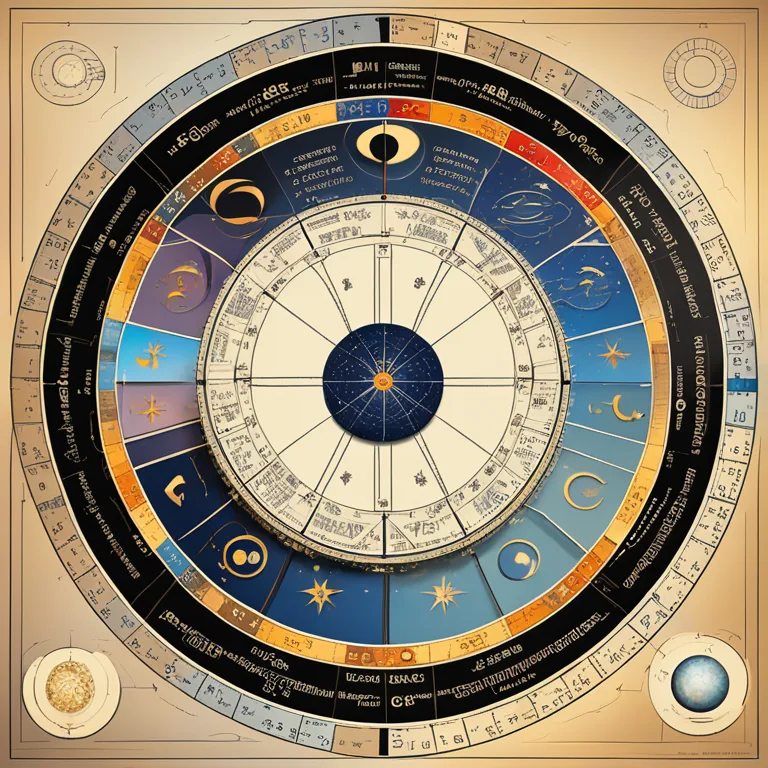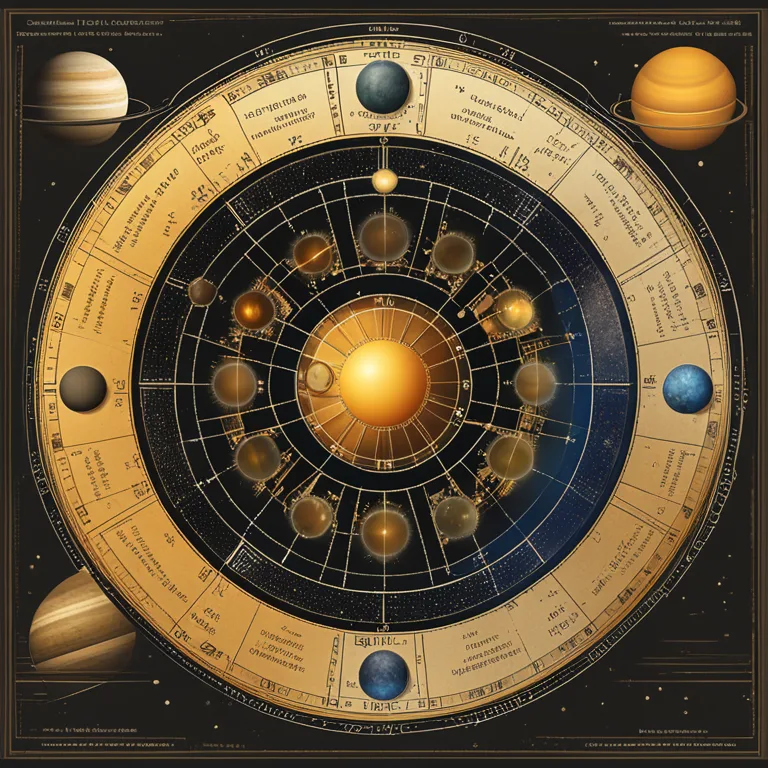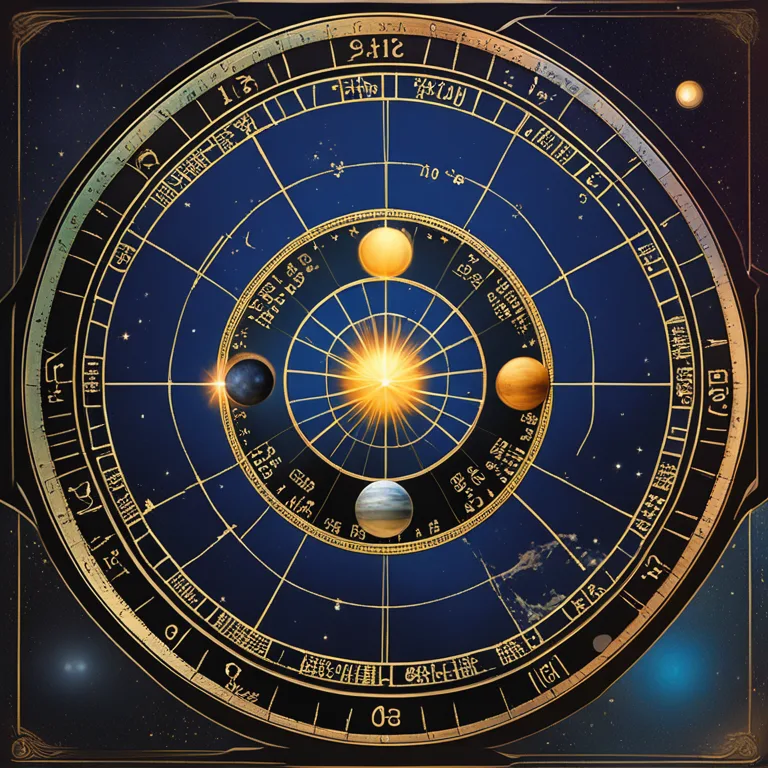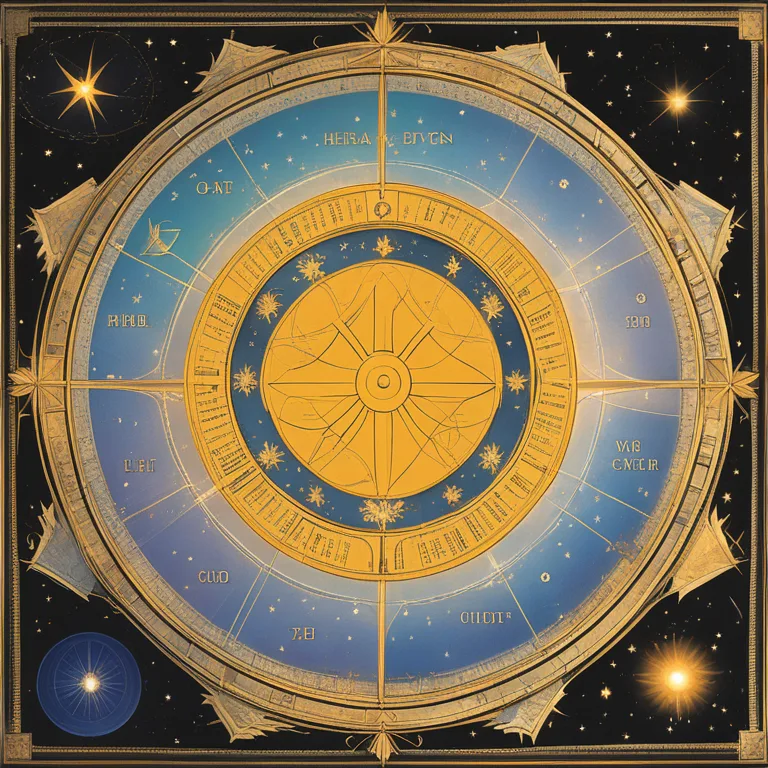
The Paramount Birth Chart in Astrological Insight
Discover the most crucial birth chart in astrology that holds the key to unlocking personal insights and future pathways.
article by Priya Deshmukh
The Significance of a Natal Chart
Astrological practice rests on the foundational stone known as the natal chart, or birth chart, which maps the sky at the exact moment of one’s birth. This celestial snapshot is individualized for every person and serves as an astrological fingerprint, containing the secrets to one’s personality, potential, and life paths. Framing an individual's inherent qualities and forecasting future events, the natal chart's importance is unparalleled in the astrological realm. It is the personalized chart that astrologers scrutinize to decipher cosmic influences on one's life journey, revealing the intricate dance between fate and free will.

Components of the Natal Chart
The natal chart comprises various astrological elements, such as planets, signs, houses, and aspects. The precise positioning of each planet in a specific zodiac sign and house at one's birth time creates a complex network of traits and tendencies. A deeper examination into the aspects, or angles, planets form with one another can shed light on the dynamic aspects of an individual's personality and how they navigate their environment. These components in tandem construct a multi-dimensional portrayal that is rich with significance and potential for personal growth.

Transits and Progressions: Dynamic Influence
Complementing the static nature of the natal chart are transits and progressions, which represent the moving energy through time. As celestial bodies continue their journey, they form new relationships with the positions in one’s birth chart, activating different facets of life depicted within. The heavyweights in transitory astrology are Saturn return, Jupiter cycle, and the progressions of the Moon and Sun, which define epochs in an individual's life, heralding growth, challenges, and transformation. Understanding these dynamics is essential for grasping how the natal chart serves as a foundation for future influences.

Primary Angles: Ascendant and Midheaven
Key components of the birth chart include the Ascendant (rising sign) and Midheaven (MC), which hold particular sway over one's identity and life direction. The Ascendant signifies the mask one wears and how they are perceived by the world, while the Midheaven reflects one's career path, status, and public achievements. These angles are considered prime signifiers within the chart, acting as the axis upon which personal narrative and outward success pivot.

Sun, Moon, and Ascendant: The Personal Trinity
In the realm of natal astrology, three significant points — the Sun, Moon, and Ascendant — comprise what can be termed the personal trinity. The Sun spotlights one's core essence, the Moon illuminates inner emotional landscapes, and the Ascendant reveals how one interfaces with the world. This trinity acts in concert to encapsulate individual consciousness in a comprehensive way, offering a blend of external and internal qualities that determine personality.
Synastry and Composite Charts: Relationships Decoded
Pertinent to relationships, synastry and composite charts take center stage. Synastry overlays two natal charts, analyzing inter-aspects to gauge compatibility and interaction, while composite charts merge two natal charts to form a single chart representing the relationship itself. These relational charts are invaluable in interpreting the dynamics between individuals, but they are grounded in the analysis of each person’s natal chart, reinforcing its status as the astrological bedrock.
Published: 12/27/2023
Modified: 12/27/2023
More predictions
Come back here soon to learn more about yourself and your future


The Value of Your Birth Chart Circle
Delve into the mysteries of your birth chart circle and learn how the heavens at your birth moment influence your life path.


Birth Charts Unravelled: Beginner's Guide
Delve into the basics of birth chart analysis and its significance in personal astrology with this beginner-friendly guide.


The Virgo Birth Chart: A Cosmic Profile
Dive into the details of a Virgo's astrological birth chart to discover the intricacies of their celestial blueprint in astrology.